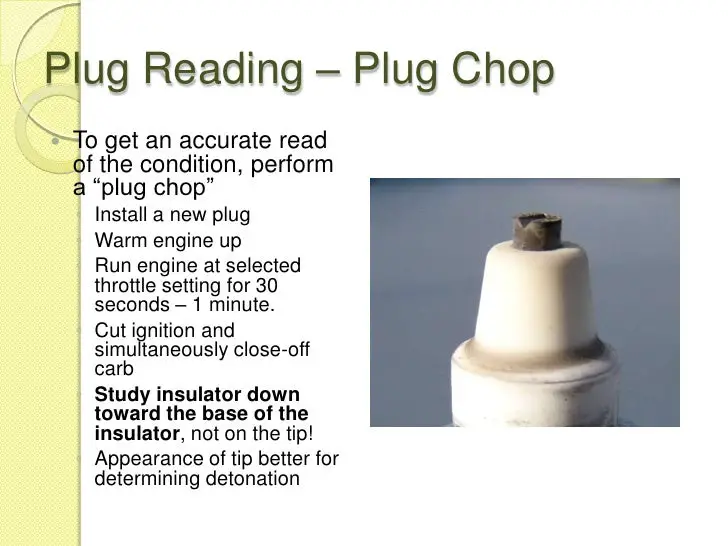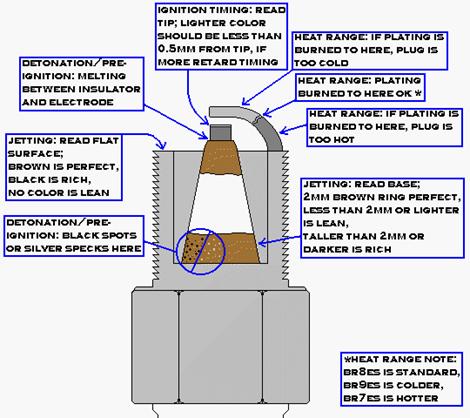If you don't need the choke your jetting is too rich. What is wrong with too rich if it runs and and you are happy with it? Nothing, if you are happy with it, but you are losing fuel and performance.
First of all, I have to confess I am new to Happy Time motors, but I have a 40 year history with 2 strokes. 2 strokes (especially tuned pipe 2 strokes) are very susceptible to jetting issues. Too lean they run hot and detonate, burn pistons, destroy bearings. Too rich, they run lazy, never "make pipe", foul plugs and ports, use gobs of fuel, and just don't perform like they should. The manufacturers usually push them out the door a bit on the rich side. My China Girl Grubee was no exception.
So what is involved with tuning a Carb? First you have to know how to read if the fuel mixture is burning rich or lean, then you have to know what to adjust and how.
Reading the mixture, rich or lean is done by reading the base of the insulator of a new plug. You warm up the engine, put a new plug in and run it full throttle, full load as long as you dare. A few seconds to a minute will work. Then you look at the base of the insulator. This is what you usually see:
Pretty hard to see the base of the insulator isn't it? You can just barely see a dark band.
So we often cut the threads off the plug to see the "smoke ring"
"CUT A NEW PLUG! ARE YOU CRAZY?" So waste a new plug or waste a motor, your choice.
This whole series run from very rich to over lean to give you an example.
Here is another graphic I like about reading a plug:
It is the lower smoke ring you read, not the top one. The top of the insulator is more about the plug heat range and reads much the same as mixture, but takes longer to develop. Black is too cold, white is too hot.
If the smoke ring doesn't push all the way down to the base of the insulator, it is a sign you are not developing much pressure in the cylinder. More power can be had.
Whew, not to adjust. You have 3 mixture adjustments on most carbs. Idle/low-speed/pilot which is a fixed (nonadjustable) jet on the NT carb. The needle for the mid-range, you can learn about that later, and the main jet for Wide Open Throttle (WOT). The main jet is most important as a starting place and where performance is made and where engines are made or blown up.
You need a selection of main jets. Any jet that fits will work as long as all the jets you have are from the same supplier and are marked for sizes. Oddball jets will give oddball results which can be more expensive than buying a selection of good quality jets. Old jets corrode and varnish up and go lean, wire cleaned or needled jets go rich with time. Bigger numbers are richer. So what if your present jet is not numbered and you don't have a selection like I find with my NT? Here is the backyard hack to jetting:
If your jet is very rich, you can put the smallest strand of copper wire through it. Ball it up a bit on both ends so it doesn't fall through or restrict flow. If this leans it out too much, you are left with removing it and lowering the float lever a milimeter or two. If the jet as supplied is too lean, you have to make the hole larger with either a special micro sized drill (can drill it by hand) or filing or wearing it out with a wire or welder's tip cleaner set.
That is it guys, back alley jetting.
Steve




